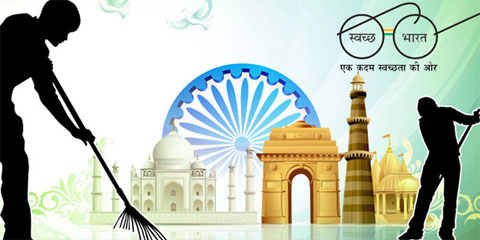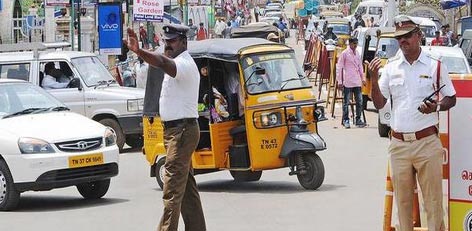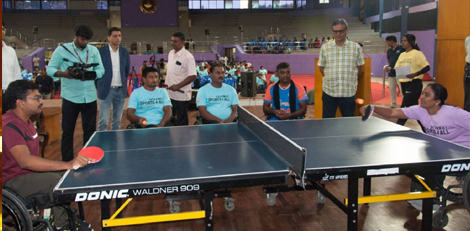Swachhta Hi Seva Campaign
Posted on: 29/Sep/2017 11:50:53 AM

On September 15, 2017, the President of India launched a nationwide sanitation campaign �Swachhta Hi Seva� at Iswarganj village in Kanpur. The President administered the Swachhta Hi Seva Pledge whereby the Nation resolved to create a clean healthy and new India. Addressing the gathering the President said �India is fighting a decisive battle for cleanliness and hygiene. Cleanliness is not the responsibility of only sanitation personnel and government departments; it is a multi-stakeholder national movement.�
Mahatma Gandhi had once famously said �sanitation is more important than political freedom.� This statement underscored the criticality of sanitation in society. Inspired by these words, on August 15, 2014, the Prime Minister gave a clarion call to the Nation from the ramparts of Red Fort to fight filth and open defacation, change old habits and achieve a Swachh Bharat by 2019, to mark the 150th birth anniversary of Mahatma Gandhi. He further said that �women�s pride is an important issue in our villages today. The practice of open defacation must be stopped. Toilets must be built and used.�
The aim of the Swachh Bharat Mission is to achieve a clean and open defacation free India by October 2, 2019. The objectives are generating demand for toilets leading to their construction and sustained use by all household members, promoting better hygiene behavior amongst the population and improving cleanliness by initiating solid and liquid waste management projects. The financial allocations under the Swachh Bharat Mission increased from Rs.2850 crores in 2014-15 to Rs.6525 crores in 2015-16, to Rs.10,500 crores in 2016-17, to Rs. 14000 crores in 2017-18. In the last 3 years, under the Swachh Bharat Mission, 48,264,304 toilets were constructed. Open Defacation Free Villages reached 2,38,966. Individual toilet coverage increased from 42 percent in 2014 to 64 percent in 2017. 5 States have declared themselves open defacation free. The Ministry of Drinking Water and Sanitation has said that the progress achieved is encouraging to reach the goal of an Open Defacation Free India by October 2, 2019.
The Swachh Bharat Mission sought to reform the sanitation sector with the primary focus being on behavioral changes as the fundamental tool for achievement of Open Defacation Free outcomes. Inclusiveness under the Swachh Bharat Mission was achieved by designing public and community toilets keeping in mind the special needs of menstruating women, the elderly, the specially abled and small children. Further the Mission sought to promote gender sensitive information, education and communication/ behavioral changes. The Mission issued Gender guidelines in 2017 and Menstrual management guidelines in 2015.
An innovative monitoring and evaluation system was put in place. The Swachh Sarvekshan was conducted for rural India and revealed that Mandi (Himachal Pradesh) and Sidhudurg (Maharashtra) were the cleanest districts in India. The Swachh Sarvekshan assessed 22 Hill districts and 53 Plain areas. National level monitors were hired to carry out sample-based checks of sanitation coverage and open defacation free status across the country.
A massive survey covering 92000 households in 4626 villages across the country is being conducted. An additional 200 villages located on the banks of Ganga are being surveyed. Eminent personalities like Amitabh Bacchan was nominated as the Brand Ambassador for Swachh Bharat Mission and celebrities like Sachin Tendulkar and Akshay Kumar attended champion collector conclaves for motivational purposes. The Swachh Bharat Mission maintained a significant social media engagement for enhancing awareness levels and a newsletter Swachhta Samachar Patrika was published on a regular basis. A recent Bollywood film titled �Toilet � Ek Prem Katha� based on the Swachh Bharat Mission witnessed considerable box office success.
The Swachh Bharat Mission represents a national movement with diverse stakeholders comprising of Central Ministries, State Governments, local institutions, non-government and semi-government agencies, corporates, NGO�s, faith organizations and media. This approach is based on the Prime Minister�s call that Swachhta has to be everyone�s business and not only that of the sanitation departments.
A host of special initiatives and projects have come out in quick time. The Inter-Ministerial Projects included Swachhta Pakhwadas, Namami Gange, Swachhta Action Plan, Swachh Swasth Sarvatra campaign, School Sanitation drives, Anganwadi Sanitation drives, Railway Sanitation etc. The inter-sectoral collaborations included Swachh Iconic Places, Corporate Partnership, Inter Faith Cooperation, Media engagement and Parliament engagement. Swachhta Action Plans were developed by 76 union ministries and departments and web based portal was developed to monitor progress and highlight implementation status. Women Swachhagrahis were appointed and Swachh Shakti Awards were instituted to further enhance women involvement with the program. The Swachh Bharat success stories said that accessible and secure toilets had made a big difference to the lives of village communities, as they did not have to travel distances in the dark to relieve themselves. Further the health risks of open defacation were greatly reduced by having a toilet in the house.
The Vice President of India said that Swachh Bharat Mission is at a tipping point from where a major is expected to spiral it into a massive Jan Andolan � a people�s movement. The Sawchhta Hi Seva Campaign seeks to mobilize people to come out and get directly involved with the Swachh Bharat Mission by offering shramdaan for swachhta in the fortnight leading upto Gandhi Jayanti.
Come join the Swachhta Hi Seva Campaign.







